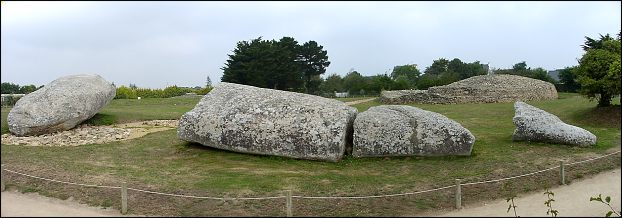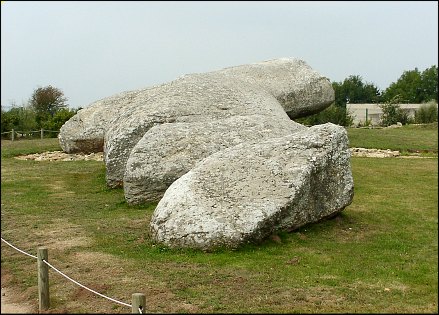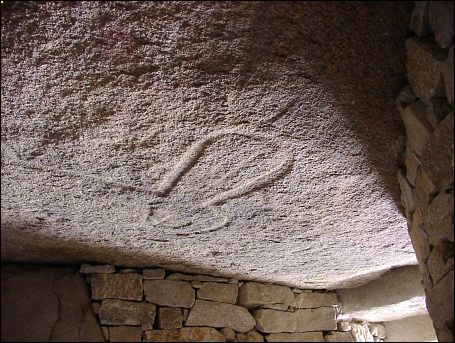Le Grand Menhir Brisé

Le Grand Menhir Brisé with the Table des Marchands dolmen in the background
This site is in the care of Monum and a small entry fee is charged. It is worth confirming entry times when I was there high season May - August 10am - 7 pm, low season September - April 10am -12:30, 2pm - 5:15 pm with last entry tickets sold 45m before closing
Near the village of Locmariaquer, and close to the Pierres Plats dolmen the Grand Menhir Brisé would have been the largest standing stone in the region, weighing 280 tonnes and 20m long. Until recently it was thought that this had either been an unsuccessful Neolithic project which broke while being raised, or that it had successfully been raised. and tumbled as a result of earthquake or a lightning strike.

a more end-on view - you can see that the largest piece did not fall in line with the others.
More recent studies show this may have been toppled only a few centuries after it was raised by Neolithic people needing stone for a capstone for dolmens. To me this somewhat begs the obvious question "which one" and I would expect to see a piece missing from here in a different location. But I haven't seen the original paper, this theory is simply indicated on the information board at the site.
Nearby (in the background of the photo) is the dolmen Le Table des Marchands. This site has been extensively (and repeatedly) reconstructed, but retains some of its magic despite modern attention because of the carvings seen inside.

carving of an axe on the roof of Le Table des Marchands
Of particular note is this fine carving of an axe set in a shaft on the roof of this dolmen (ie the underside of the capstone), and there are other carvings inside.
Location: (Le Grand Menhir Brisé) 47.5714080N 2.9512141W
